Exterior wall cladding isn’t just about looks—it’s a protective shield against the elements, saving you from the hassle and expense of frequent repainting. By providing an extra layer of defense against rain, wind, and sunlight, it not only keeps your walls looking fresh but also contributes to energy efficiency and thermal comfort inside your building. But it’s not all function—cladding adds character, texture, and architectural interest, elevating the overall aesthetic appeal of your structure. In essence, it’s a smart, stylish choice that enhances durability, comfort, and visual charm.
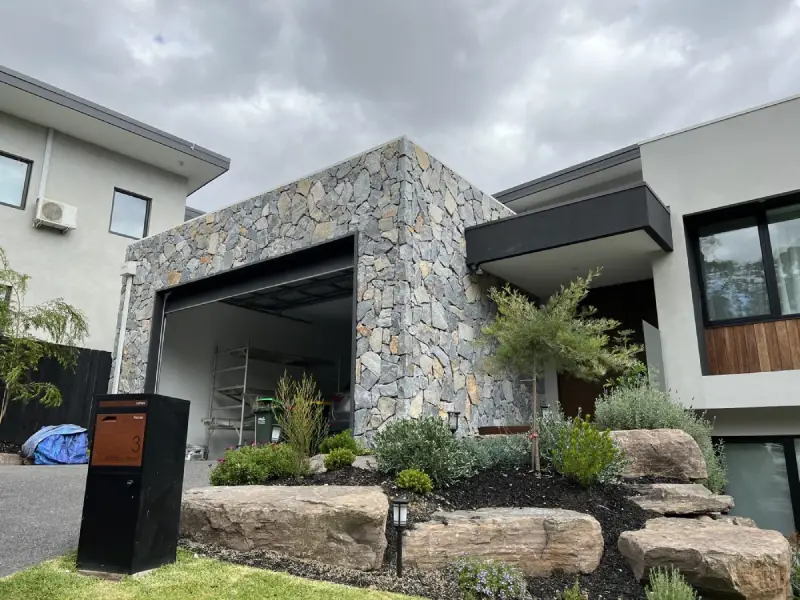
This article is an honest effort to provide comprehensive answers to common questions one may have when considering natural stone wall cladding for exterior applications. Whether you’re a homeowner embarking on a renovation project or an architect designing a new building, selecting the right natural stone for exterior wall cladding involves careful consideration of various factors. From understanding the benefits of natural stone to exploring the different types available in the market, we aim to provide valuable insights to help you make informed decisions. In this blog, we’ll dive into key questions, making it an engaging and informative read.
What makes natural stone the preferred choice for wall cladding over other available options?
- Classical Choice: Natural stone offers a timeless appeal that is difficult to replicate with synthetic materials. Its unique variations in color, texture, and pattern add character and charm to any space, enhancing the overall visual appeal.
- Durability: Natural stone is inherently durable and resilient, able to withstand the rigors of outdoor exposure to weather elements such as rain, wind, and sunlight. It is resistant to fading, scratching, and staining, ensuring long-lasting beauty and functionality.
- Versatility: Natural stone comes in a wide range of types, including granite, marble, limestone, slate, and travertine, each with its distinct characteristics. This variety allows for endless design possibilities, catering to diverse aesthetic preferences and architectural styles.
- Biophilic Benefits: Natural stone has been shown to have positive psychological effects on occupants, promoting a sense of well-being and connection to nature. Incorporating natural elements into building design can create a more harmonious and inviting environment.
Now that we’ve explored why natural stone is a preferred option for exterior walls, the next important consideration is understanding the significance of selecting the correct natural stone material. Before delving into the myriad options available in the market, it’s essential to grasp why choosing the right natural stone is crucial.
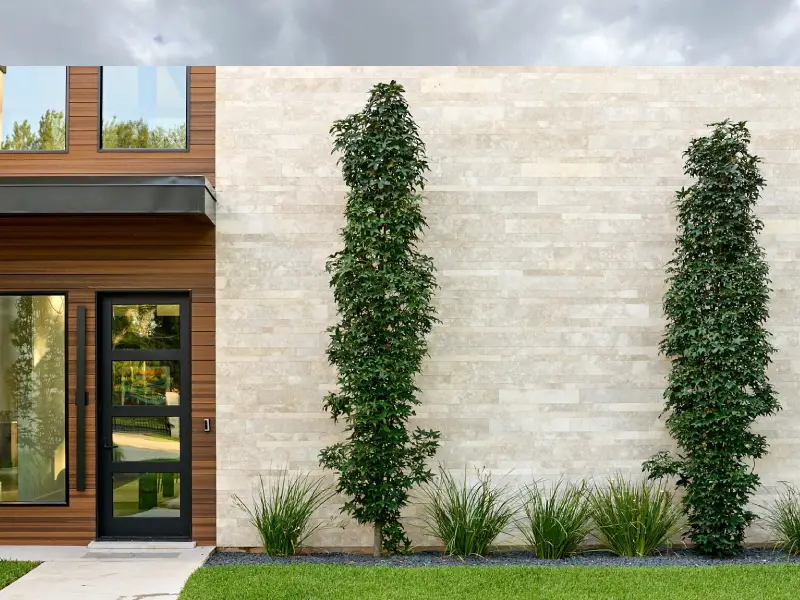
Why choosing the right natural stone for Exterior Wall Cladding is important?
Choosing the right natural stone for exterior wall cladding is important for several reasons:
- Appeal: The natural stone you choose will significantly impact the overall appearance of your building. Different types of natural stone offer unique colours, textures, and patterns, so selecting the right one ensures that your exterior has the desired aesthetic appeal.
- Durability: Natural stones vary in their durability and resistance to weathering. Choosing a durable stone ensures that your exterior cladding will withstand the elements and maintain its appearance over time, reducing the need for repairs or replacements.
- Climate Compatibility: Certain natural stones perform better in specific climates. By choosing a stone that is suitable for your climate, you can prevent issues such as cracking, discoloration, or deterioration due to freeze-thaw cycles or extreme temperatures. (Also Read | Do Granite Fade and Dull in Sunlight? Prevention and Care)
- Maintenance Requirements: Different types of natural stone have varying maintenance needs. Some may require regular sealing or cleaning to maintain their appearance, while others may be more low-maintenance. Selecting a stone that aligns with your maintenance preferences can save you time and effort in the long run.
- Cost Considerations: Natural stone comes in a range of price points, so choosing the right stone for your budget is essential. While some stones may have a higher upfront cost, they may offer better long-term value due to their durability and longevity.
READ | Granite Wall: From Shower to Exterior Walls, Find Out Why
Having established the importance of selecting the right natural stone for exterior wall cladding, let’s now delve into the myriad options available in the market. We’ll explore the different types of natural stone materials that are commonly used for exterior walls, each offering unique characteristics and benefits.

What are the different types of natural stone that are commonly used for exterior walls?
Here are some of the most commonly used types of natural stone materials for exterior walls, along with their characteristics and benefits:
Granite:
- Characteristics: Granite is a durable and dense natural stone known for its strength and resistance to weathering. It typically features speckled patterns and comes in a variety of colors, ranging from light to dark.
- Benefits: Granite is highly durable and can withstand harsh weather conditions, making it ideal for exterior wall cladding. It requires minimal maintenance and retains its appearance for years, adding a timeless elegance to buildings.
Limestone:
- Characteristics: Limestone is a sedimentary rock with a soft, earthy appearance. It often features fossilized remains and comes in various shades of beige, gray, and brown.
- Benefits: Limestone offers a classic and elegant look to exterior walls. It is relatively easy to work with, allowing for intricate detailing and carving. While not as hard as granite, limestone still provides good durability and weather resistance.
Slate:
- Characteristics: Slate is a fine-grained metamorphic rock that typically has a smooth, flat surface. It comes in shades of gray, green, black, and purple, with natural variations in color and texture.
- Benefits: Slate is highly durable and resistant to water, making it suitable for exterior applications. It has a natural cleft surface that provides excellent traction and slip resistance, making it ideal for wall cladding in wet or icy conditions.
Marble:
- Characteristics: Marble is a metamorphic rock with a distinctive veined appearance and a range of colors, including white, gray, pink, and green. It has a smooth and polished surface that reflects light beautifully.
- Benefits: Marble adds a touch of luxury and sophistication to exterior walls. While not as hard as granite, marble still offers good durability and weather resistance. Its timeless beauty and elegance make it a popular choice for high-end architectural projects.
Sandstone:
- Characteristics: Sandstone is a sedimentary rock composed of sand-sized grains of minerals or rock fragments. It comes in various colors, including tan, brown, yellow, red, and gray, with natural variations in texture and veining.
- Benefits: Sandstone is prized for its warm and earthy appearance, adding a rustic charm to exterior walls. It is relatively easy to work with, allowing for creative design possibilities. Sandstone also offers good durability and weather resistance, making it suitable for outdoor applications.
- Explore the range of Sandstone
READ | Sandstone Colours: Origins, Applications, Varities, and Consistent Selection
Each of these natural stone materials offers unique characteristics and benefits, allowing architects and designers to create stunning and durable exterior wall cladding that enhances the beauty and functionality of buildings.
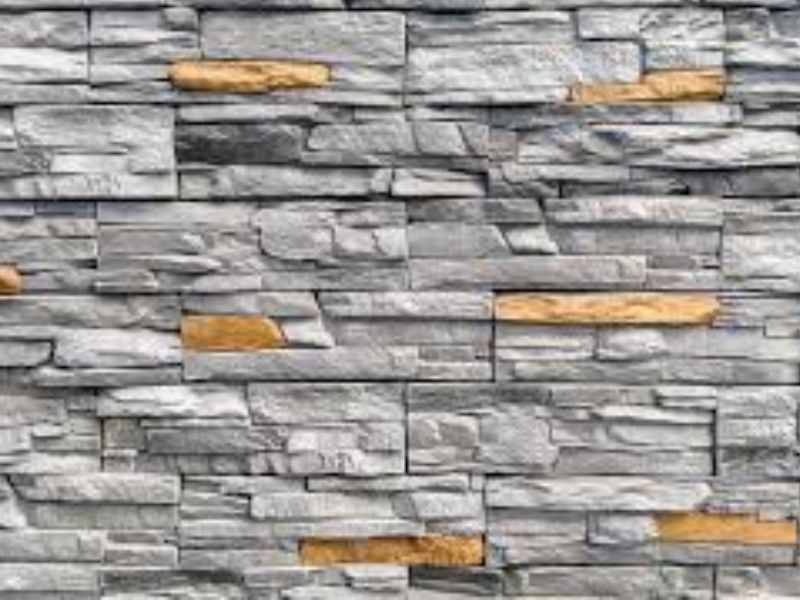
What are the differences between various types of natural stone in terms of durability and maintenance?
The differences between various types of natural stone in terms of durability and maintenance primarily stem from variations in their mineral composition, porosity, and surface characteristics. Here’s a brief overview:
Granite:
- Durability: Granite is one of the most durable natural stones, known for its hardness and resistance to scratching and staining.
- Maintenance: Granite is relatively low-maintenance and typically requires periodic sealing to protect against stains and moisture penetration.
Limestone:
- Durability: Limestone is less dense and softer compared to granite, making it more susceptible to scratching and weathering over time.
- Maintenance: Limestone generally requires more frequent sealing and cleaning to prevent staining and deterioration.
Slate:
- Durability: Slate is highly durable and resistant to water, making it suitable for exterior applications. Its natural cleft surface provides excellent traction and slip resistance.
- Maintenance: Slate is relatively low-maintenance and requires periodic sealing to maintain its appearance and protect against water damage.
Marble:
- Durability: Marble is softer and more prone to scratching and etching compared to granite. It is less suitable for high-traffic areas or outdoor applications.
- Maintenance: Marble requires regular sealing and careful maintenance to prevent staining and surface damage. Acidic substances can etch the surface of marble, so spills should be cleaned promptly.
Sandstone:
- Durability: Sandstone varies in durability depending on its composition and density. Some varieties are quite durable and suitable for exterior applications, while others may be more prone to weathering.
- Maintenance: Sandstone typically requires periodic sealing and cleaning to prevent staining and maintain its appearance. Its porous nature makes it susceptible to water absorption and weathering.
Overall, the differences in durability and maintenance among natural stone types highlight the importance of selecting the right material based on the specific requirements of the project, including the expected level of wear and exposure to environmental factors. Regular maintenance and proper care can help maximize the longevity and beauty of natural stone wall cladding.
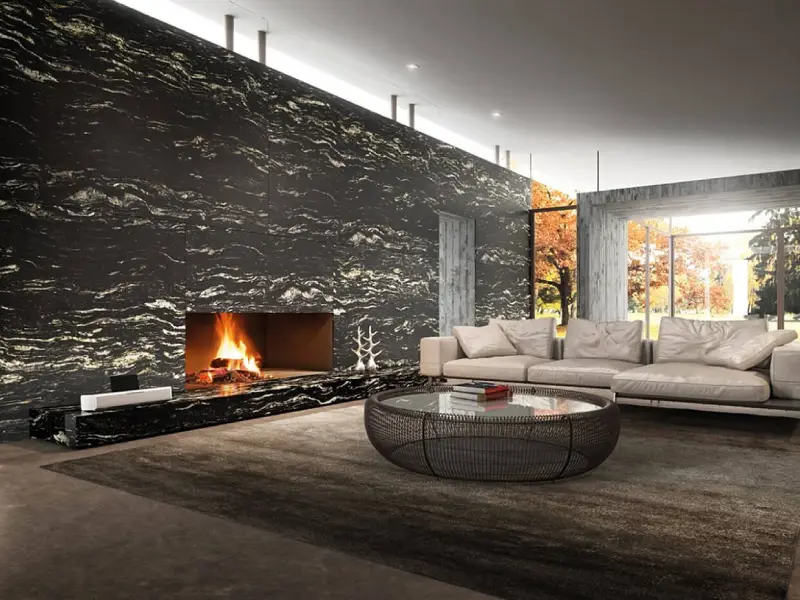
Are there any specific weather considerations I need to keep in mind when selecting natural stone for exterior walls?
There are several weather considerations to keep in mind when selecting natural stone for exterior walls:
When selecting natural stone for exterior walls, consider these weather factors:
- Freeze-Thaw Cycling: Choose a stone resistant to temperature fluctuations.
- Moisture Resistance: Opt for low-porosity stones like granite and slate to prevent water damage.
- UV Resistance: Select stones treated to maintain colour and integrity in sunlight.
- Wind Resistance: Pick dense, durable stones such as granite or limestone for windy areas.
- Salt Resistance: Choose stones resistant to salt damage, especially in coastal regions.
- Mold and Mildew Resistance: Select stones that resist mold growth or are easy to clean and maintain.
- Climate Compatibility: Ensure the chosen stone can withstand your region’s specific climate conditions.
What maintenance tasks are involved in caring for natural stone wall cladding, and how frequently do they need to be performed?
Maintaining natural stone wall cladding involves:
- Periodic cleaning with mild detergent and water.
- Periodic sealing to protect against water and stains.
- Prompt removal of spills and stains.
- Avoiding heavy objects and impact damage.
- Inspecting for damage and making repairs promptly.
- Using gentle cleaning methods to prevent scratching.
- Professional maintenance as needed, including deep cleaning and resealing.


 Fact Checked
Fact Checked




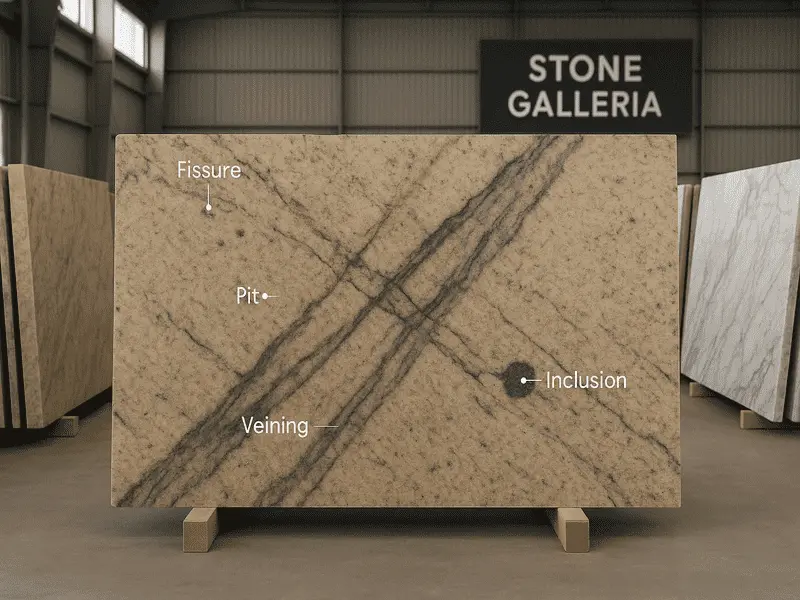
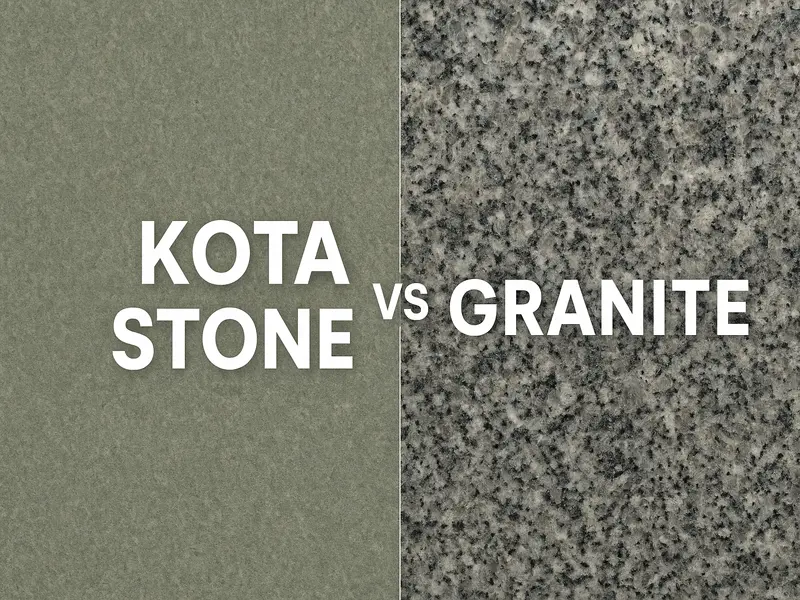



![Latest GST on Granite Slabs & Blocks [2025 Chart + HSN + Price Examples]](https://stonegalleria.in/admin/images/blog/latest-gst-on granite.webp)




